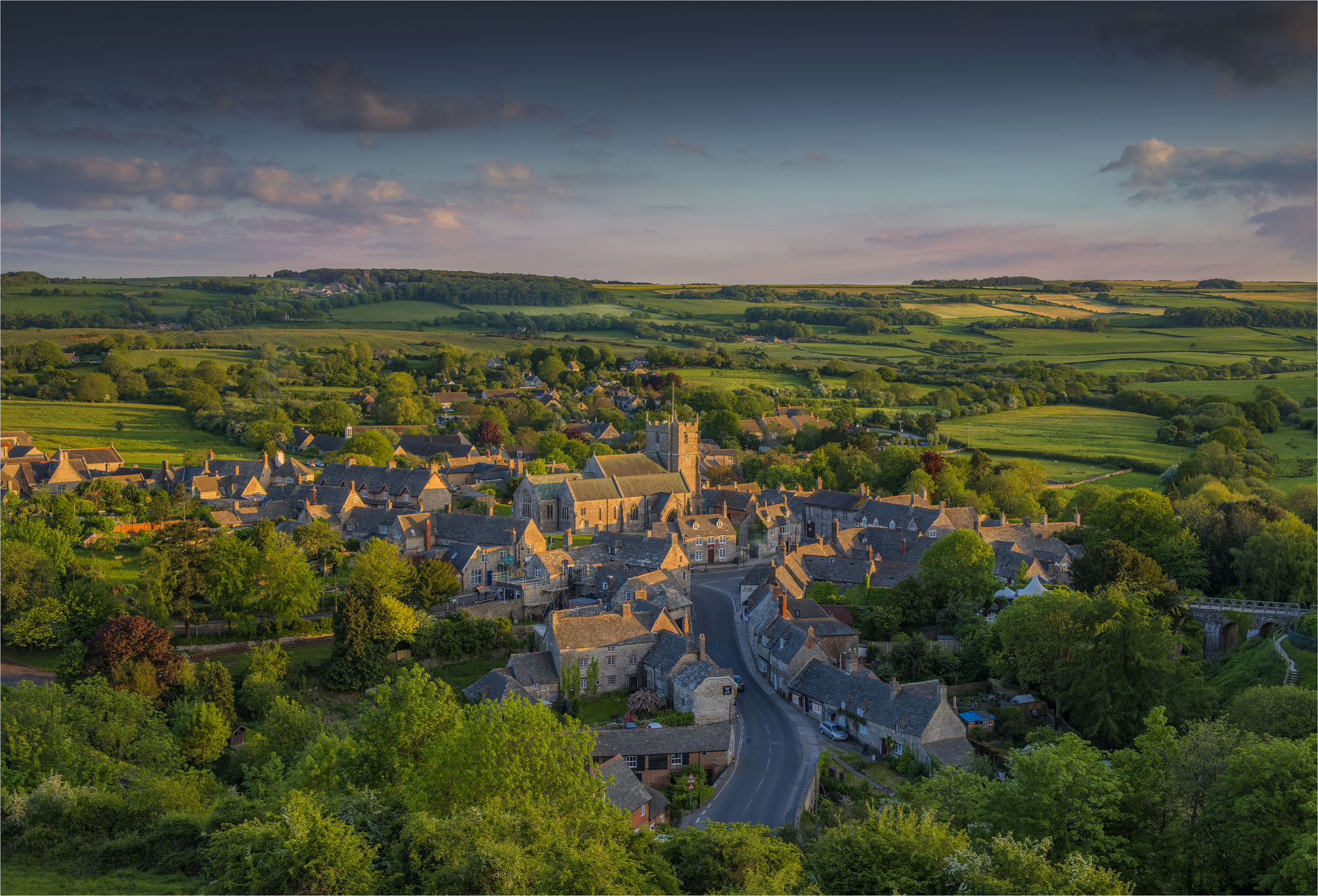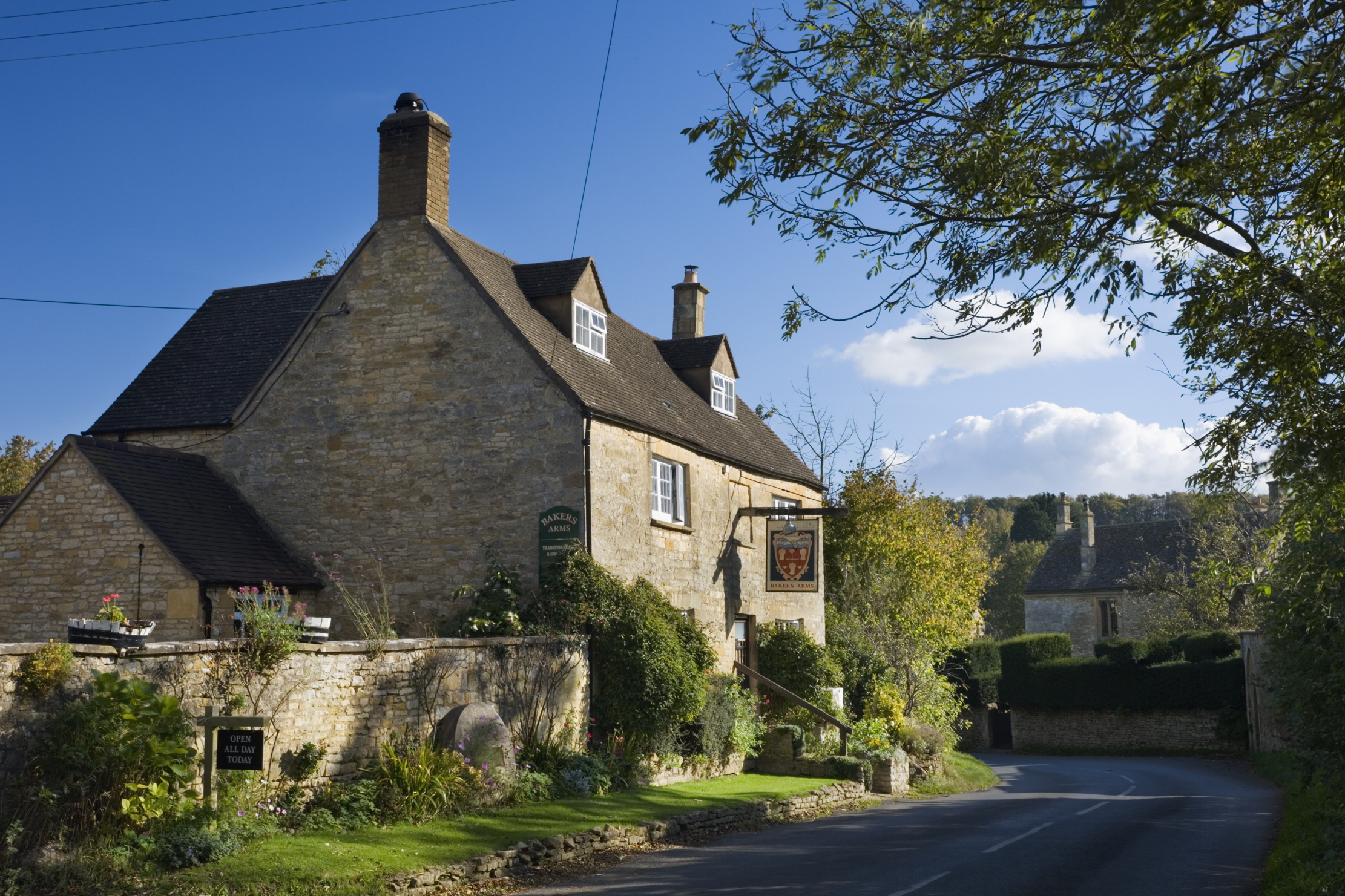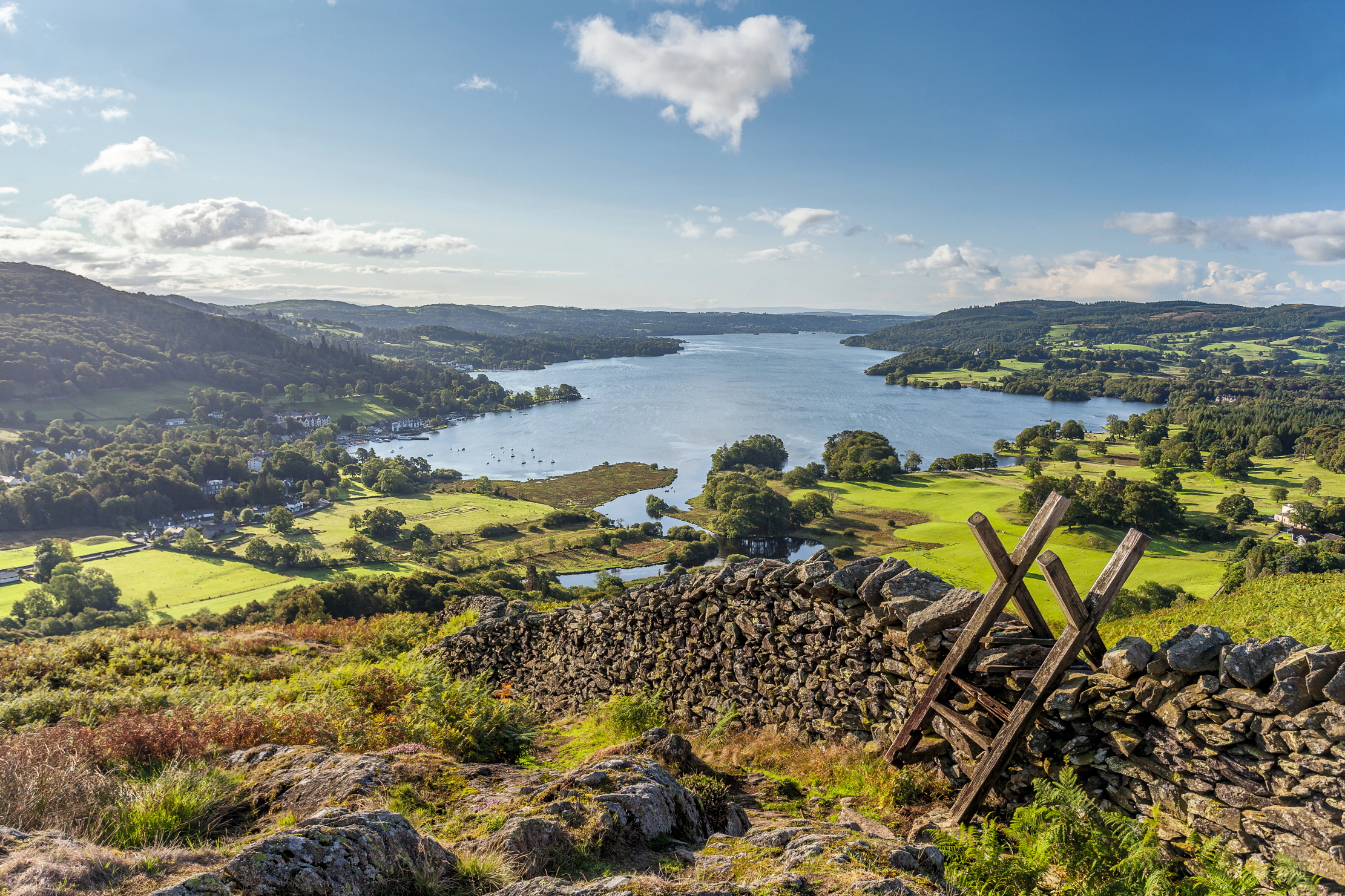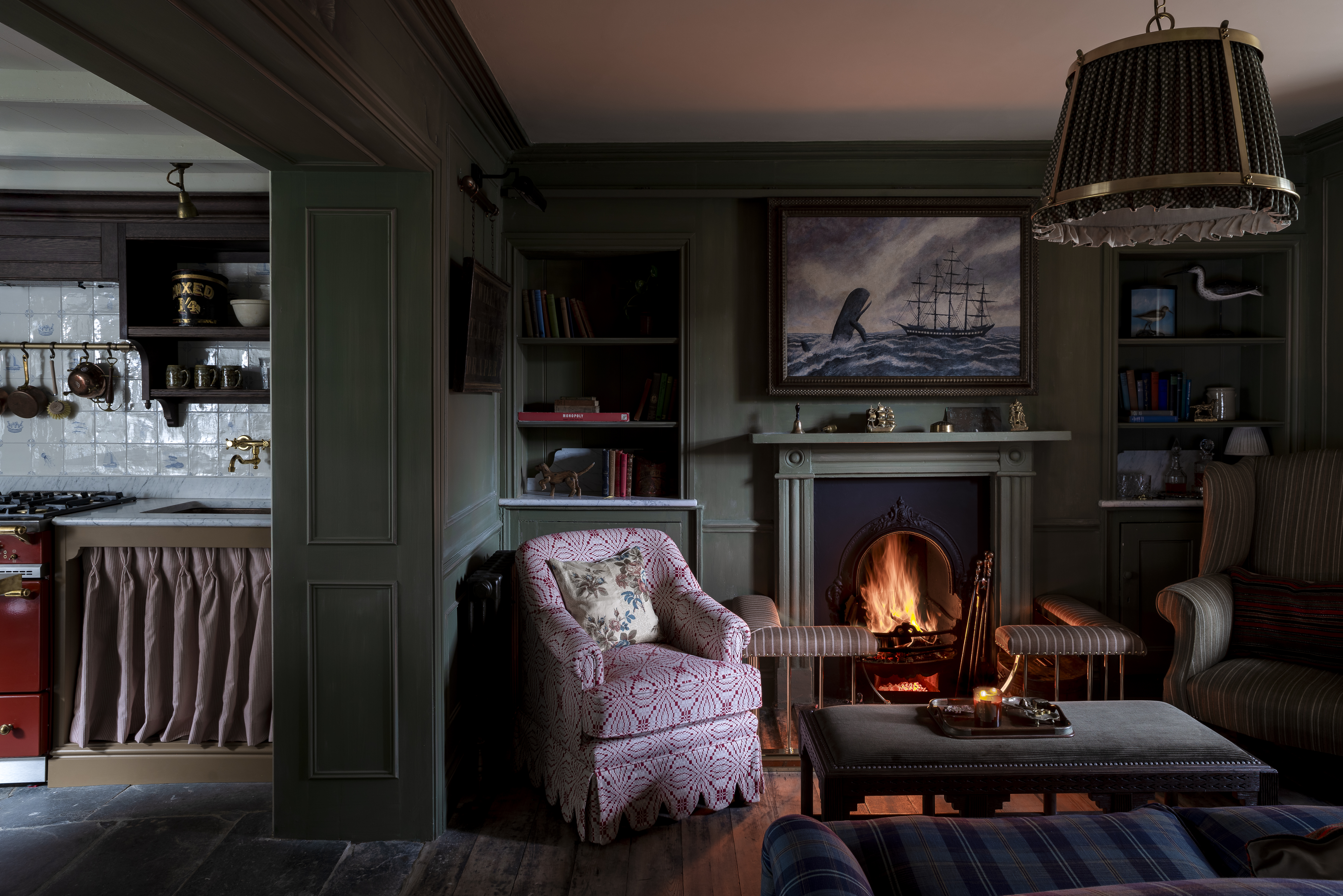John Lewis-Stempel: The English village, that beguiling habitat closest to the heart
Green, pub, church, duck pond and rose-garlanded cottages: did the perfect English village ever exist?


The English village. Perhaps the beguiling habitat closest to the English heart, the place in which everyone dreams of living. What are the essentials of the quintessential English village? So familiar are they, they iterate spontaneously. Try the exercise yourself. Slumbering village green. Beamy public house. Ancient church, swifts screaming around the tower. Duck-quacking pond. Those cottages with pink roses around the porch.
I have lived in three English villages, all of them as pretty as a postcard. Yet not one of them contained the complete suite of green, pub, church, pond and rose-garlanded cottages. The perfect English village is a myth; it was always a trip up the cottage-garden path. For every rosy, black-and-white cottage, there was, historically, a hovel made of wood bits, the inhabitants gathered around a smoky fire of scavenged sticks; the phrase ‘by hook or by crook’ refers to the dead wood the medieval peasants were allowed to pull from the hedge by their lord. The very poor, like the very rich, are always with us.
The village, a largely self-supporting community, was the basis of English life from the late Anglo-Saxon era until the Industrial Revolution of the 18th century and the flight to the towns. The open strip-farming of the Saxons required labour and organisation, thus a relatively populated settlement: the village. The pastoral uplands needed land rather than people and there the distinctive habitation pattern was hamlet and scattered farmstead.
By alchemic process, the minimal makings of the actual English village became the actual English village of national nostalgia. I do not know exactly when it was born, but Laurie Lee provided a child’s chronicle in Cider With Rosie (1959) and I know it existed and was not entirely mythological, because I was there. I lived, witnessed, participated in the whole shebang: the tug-of-war on the green; the Christmas whist drive; the tombola organised by the ‘Jam and Jerusalem’ WI; rivalrous darts against Acton Beauchamp (‘The poorest place in all the nation/A lousy parson, a nitty clerk, and a shabby congregation’), the village down the Herefordshire lane; the sense of community; and the bizarre range of eccentrics, from Percy the Poach to the bone-thin aristo next door, who, when I was a child, would leap out from her herbaceous border and implore me: ‘John, watch out for people who don’t have dog hair on the sofa.’ (Strangely sage advice, I have found in the intervening four or more decades.)
When The Vicar of Dibley came on television in 1994, I was living in a city and had to explain to friends that it was more documentary than sitcom. Largely gone now, the village eccentrics have been swept aside by the homogenisation of rural society. Poverty preserves and incomer wealth eradicates. More than flora and fauna requires protection — farm labourers, having declined by 77% between 1945–2002 alone, are almost an extinct species.

Yet, of course, the village is the site of England’s dreaming. A village is human-scaled, bounded and maintained by tradition and ritual, yet proximate to Nature, even today — and the English love of Nature is very old. An Anglo-Saxon calendar for 1061 has 364 days devoted wholly to the doings of saints. The remaining day? February 11, for which the writer, a Christian monk, notes: ‘At this time, the birds begin to sing.’
The role of Christianity, especially Anglicanism, in the construction of the national wistfulness for the village and national appreciation of Nature is undervalued. If our notion of the village as the heart of England does have a foundation text, it is surely The Natural History of Selborne of 1789, by the Revd Gilbert White, never out of print and the fourth most-published book in the English language, after the Bible, Bunyan and Shakespeare. I mean, really, one month into the Second World War, the nation on the existential brink, what did England’s pre-eminent woman writer Virginia Woolf do as her patriotic duty? She wrote the laudatory essay White’s Selborne for the New Statesman. She could, equally, have titled the piece ‘This is what we are fighting for’.
Exquisite houses, the beauty of Nature, and how to get the most from your life, straight to your inbox.
Each day, until the week before his death in 1793, White recorded the infinitesimal changes of the flora and fauna of Selborne, tucked into the Hampshire Downs, by what he termed ‘watching narrowly’ or precision-eyed observation of even the humblest local Nature. Parochial has become pejorative when it needs celebration. What, exactly, is wrong with local? Through being tied to place, his parish, White was able to enter into deep communion with the natural world on his doorstep. His Christianity caused him to wonder at God’s creations and, happily, reject the prevailing Cartesian Enlightenment orthodoxy that fauna were mere flesh-robots, proposing instead that they had inner lives. The members of the ‘winged nation’ are capable of a sort of talk, White wrote, adding: ‘The language of birds is very ancient, and, like other ancient modes of speech, very elliptical; little is said, but much is meant and understood.’
As all fauna and flora is God’s creation, it is all worthy of value (‘All creatures great and small’). In his respect for the creatures of the earth, the sea and the sky as sentient beings, White stands very close to us today. In understanding that Nature does not rank its members, he has surpassed us. Only certain romantic humans vaunt ‘charismatic’ animals, such as wolf and beaver. Nature itself is duende blind.
White’s Selborne is England as she was before the Fall, before industry blackened the trees and agriculture’s machinery and chemicals did away with the bustards on the Downs. White attentively mythologised a rural English village already passing beyond reach. For all its social flaws, it was a rather beautiful place, abundant with Nature, more merrie and innocent than now, blessed with a timeless tranquillity. Selborne is England’s Eden. Small surprise we return there, time and time again.
John Lewis-Stempel has twice been crowed winner of the Wainwright prize for nature writing, and was the 2016 BSME Columnist of the Year. His new book, ‘England: A Natural History’, explores 12 distinctive habitats of England

John Lewis-Stempel: Into the deep of England's lakes
Beneath the crystal-clear, alien world of water lie the great piscean survivors of the Ice Age. The Lake District is
-
 'Comfortable, cosseting and far from the madding crowd': The recently refurbished Cornish cottage that proves Victorian decor is making a comeback
'Comfortable, cosseting and far from the madding crowd': The recently refurbished Cornish cottage that proves Victorian decor is making a comebackPlum Cottage in Padstow, Cornwall, has been brought to life by Jess Alken and her husband, Ash — and is the latest addition to their holiday cottages on the north Cornish coast.
-
 How to make The Connaught Bar's legendary martini — and a few others
How to make The Connaught Bar's legendary martini — and a few othersIt's the weekend which means it's time to kick back and make yourself an ice cold martini — courtesy of The Connaught Bar.
